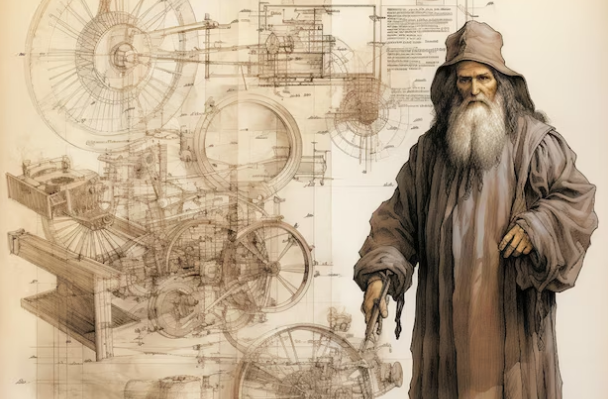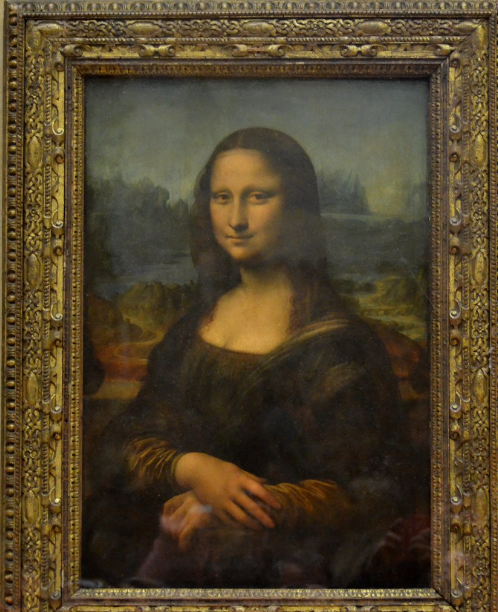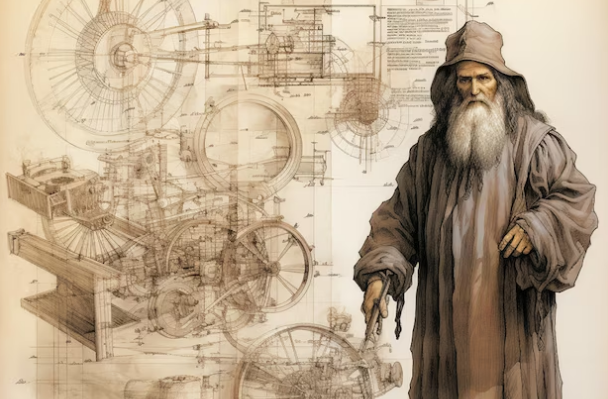Leonardo da Vinci: A Renaissance Polymath Bridging Arts, Sciences, and Technology

Leonardo da Vinci, a name synonymous with genius, stands as a towering figure of the Renaissance. His legacy extends far beyond his iconic paintings like the Mona Lisa and The Last Supper. Da Vinci was a true polymath, a master of arts, sciences, and technology, whose insatiable curiosity and innovative spirit shaped the course of human understanding.
By Charles Allen

image credit: flickr.com
Leonardo da Vinci, a name synonymous with genius, stands as a towering figure of the Renaissance. His legacy extends far beyond his iconic paintings like the Mona Lisa and The Last Supper. Da Vinci was a true polymath, a master of arts, sciences, and technology, whose insatiable curiosity and innovative spirit shaped the course of human understanding.A Fusion of Artistic Mastery and Scientific
Inquiry:
Da Vinci's artistic genius is undeniable. His mastery of perspective, anatomy, and light and shadow revolutionized painting. However, his artistic pursuits were deeply intertwined with his scientific inquiries. He meticulously studied human anatomy, dissecting corpses to understand the intricate workings of the body, a practice that informed his realistic depictions of figures in his paintings. His notebooks reveal a deep fascination with the natural world, filled with detailed sketches of plants, animals, and geological formations, demonstrating his keen observation skills and analytical mind.

image credit: Freepik
Bridging the Gap: The Renaissance Man's Technological Vision:Da Vinci's contributions to technology are equally remarkable. He was a pioneer in fields like engineering, mechanics, and hydraulics. His sketches and designs showcase a profound understanding of these disciplines, encompassing inventions such as flying machines, war machines, and innovative tools. He envisioned concepts like helicopters, tanks, and parachutes centuries before they became reality, hinting at a futuristic vision that was far ahead of his time.
The Legacy of Observation and Innovation:
Da Vinci's approach to knowledge was rooted in observation and experimentation. He believed in a holistic understanding of the world, recognizing the interconnectedness of art, science, and technology. His meticulous notebooks, filled with sketches, diagrams, and observations, remain a treasure trove of insights into his mind and methods.Impact and Inspiration:Da Vinci's legacy continues to inspire and influence us today. His innovative spirit and interdisciplinary approach have resonated throughout history, shaping scientific and artistic movements. He serves as a model for the importance of curiosity, observation, and a relentless pursuit of knowledge. His work continues to be studied and admired, reminding us of the boundless potential of the human mind to create, innovate, and understand the world around us.
Conclusion:
Leonardo da Vinci was not merely an artist or a scientist; he was a unique blend of both. He stands as a testament to the power of curiosity and the interconnectedness of knowledge. His legacy reminds us that progress often emerges from the fusion of diverse disciplines and a willingness to challenge conventional boundaries. Da Vinci's enduring influence continues to inspire generations, proving that the pursuit of knowledge and the desire to create are the driving forces behind human advancement.